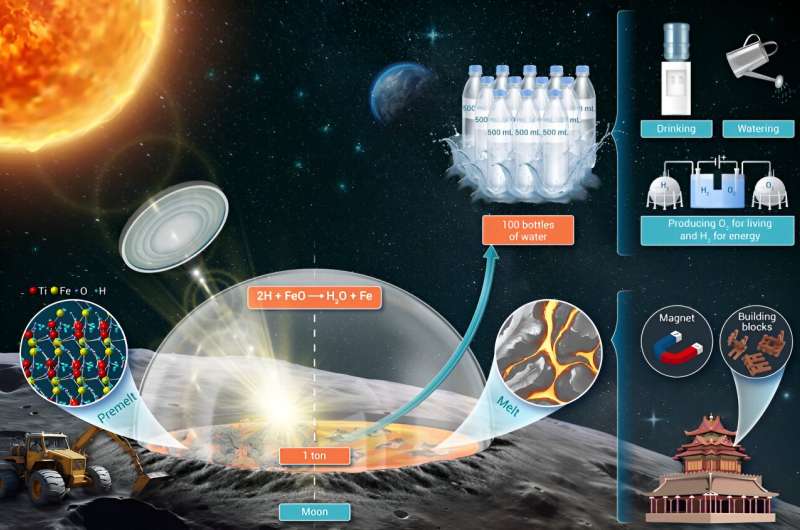The study was published in The Innovation.
The study revealed that when the lunar regolith is heated above 1,200 K with concave mirrors, one gram of molten lunar regolith can generate 51–76 mg of water. In other words, one ton of lunar regolith could produce more than 50 kg of water, which is equal to about a hundred 500-ml bottles of drinking water. This would be enough drinking water for 50 people for one day.
In addition, lunar ilmenite (FeTiO3) was found to contain the highest amount of solar wind-implanted hydrogen among the five primary minerals in the lunar regolith, owing to its unique lattice structure with sub-nanometer tunnels.
In-situ heating experiments indicated that hydrogen in lunar minerals is a substantial resource for producing water on the moon. Such water could be used both for drinking and irrigating plants. In addition, it could be electrochemically decomposed into hydrogen and oxygen, with hydrogen being used for energy and oxygen being essential for breathing.
These discoveries provide pioneering insights into water exploration on the moon and shed light on the future construction of lunar research stations.
More information: Xiao Chen et al, Massive Water Production from Lunar Ilmenite through Reaction with Endogenous Hydrogen, The Innovation (2024). DOI: 10.1016/j.xinn.2024.100690. www.cell.com/the-innovation/fu … 2666-6758(24)00128-0
Provided by Chinese Academy of Sciences



